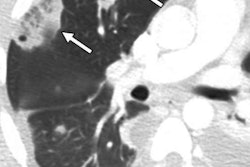Sunday, December 1 | 11:35 a.m.-11:45 a.m. | SSA03-06 | Room S105AB
Artificial intelligence (AI)-based fractional flow reserve (FFR-CT) analysis can add diagnostic and prognostic value in patients receiving triple-rule-out coronary CT angiography (CTA), according to a study to be presented this talk.Acute chest pain is one of the most common reasons for presentation to the emergency department (ED). The differential diagnosis of acute chest pain is challenging, however, according to study co-author Dr. Simon Martin of the Medical University of South Carolina in Charleston.
Triple-rule-out CTA enables simultaneous assessment of the coronary arteries, aorta, and pulmonary arteries in a single test. In this study, the multinational team of researchers sought to evaluate whether AI-based FFR-CT derived from this imaging exam would add value for patients with acute chest pain in the ED setting.
In the retrospective study, the researchers applied deep learning-based FFR-CT software (Siemens Healthineers) on nearly 160 patients who had presented to the ED with acute chest pain. They then compared the software's results with that of triple-rule-out CTA alone for stenosis and downstream cardiac diagnostic testing. They also assessed the predictive value of FFR-CT for coronary revascularization and major adverse cardiac events (MACE) over a one-year follow-up period.
The researchers concluded that it was feasible to calculate FFR-CT from triple-rule-out CTA data in the ED setting.
FFR-CT was a "better predictor for coronary revascularization and MACE and showed better agreement with additional diagnostic testing than stenosis on triple-rule-out CTA," Martin told AuntMinnie.com.
What's more, FFR-CT may improve the specificity in identifying significant coronary artery disease in patients with acute chest pain, he said.
What else did they find? Attend this presentation by Dr. Moritz Albrecht to learn more.





















